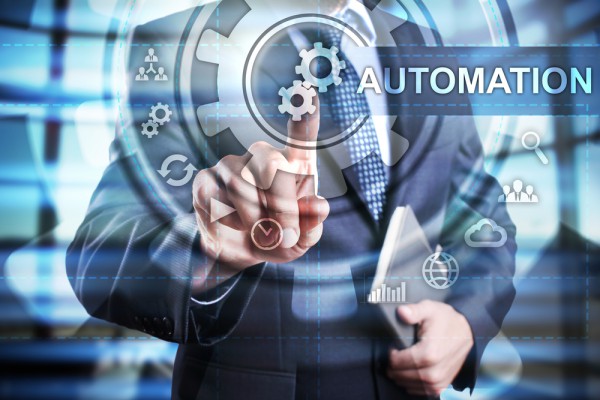Why enterprise automation is key to digital transformation [Q&A]

In the wake of the COVID-19 pandemic, many enterprises turned their attention to digital transformation projects. But a talent shortage has held things back, leading many to consider automation as a way to alleviate the burden today's organizations are experiencing.
We spoke to Charlie Newark-French, chief operating officer of human centered automation company Hyperscience, to find out more about the balance between humanity and AI, automation's role in the digital enterprise, and automation's role in digital transformation.
BN: Why do you think automation is essential to enterprises today?
CNF: Employees and consumers want more from their employers and the brands they spend their money with. Automation provides a fundamental way for enterprises to meet those rising demands and expectations.
Consider the major industry shifts that took place in the workplace over the last year, like the rise of remote and hybrid work and employee turnover amid the 'Great Resignation.' It's become clear that today’s top talent will not be slowed by outdated, legacy technology. Talent will leave for a company that can provide a user-friendly and productive tech stack. To remain competitive, enterprises must leave dated strategies and technology behind for solutions like automation, which can speed up mundane tasks, make work more productive and improve the employee experience. In turn, enterprise organizations can streamline downstream decision-making and improve their bottom line.
It's also clear that consumers expect faster services and better experiences with their brands. Automation plays an essential role here. As the technology alleviates organizational challenges, consumers will benefit from those improvements, strengthening the experience along the way.
BN: What’s the key to balancing automation and human skills?
CNF: Automation can only go so far and do so much, without people.
Ultimately, humans are better at creative thinking, brainstorming and, of course, providing the human touch that technology cannot. I expect that to hold true for a very long time. To balance the skills of people and software, leaders can start by reviewing which manual processes are creating bottlenecks and inefficiencies. If a repetitive, manual process -- like transcribing a handwritten document to a digital format -- takes away from an employee's ability to be productive or problem solve, why not automate that task? The impacts of automation will only be felt when people and technology work alongside each other.
BN: Is part of that about ensuring that employees have the right skills to work in a more automated environment?
CNF: There is certainly an element of reskilling and upskilling as we head towards a more automated work environment. Given its far-reaching capabilities, modern-day technology can alleviate the burden of talent shortages and inefficiencies created within organizations. Many organizations find that a more automated work environment can, in turn, offer more time for employees to develop different skills. I believe that reskilling and upskilling are central to a phenomenally complicated, but positive workplace conversation. It's up to leaders to evaluate and pinpoint where employees can bolster their skill set of today, while keeping a forward-looking eye on what will be needed tomorrow.
BN: Are people right to be concerned about automation’s effect on their jobs?
CNF: To put it succinctly, jobs are not going away. Automation is not a silver bullet to replace all jobs, solve talent shortages, or address customers’ rising expectations who expect lengthy processes to be completed in minutes.
Historically, as automation grows alongside scaling companies, new opportunities are created for more human work to keep those automated systems working correctly and better serve customers. When considering the future of intelligent automation technology and digital transformation, no single task will be entirely completed by a machine or a person working in silos. Instead, I believe nearly every task will have a human and machine working on shared responsibilities for a human-in-the-loop approach that balances the skills of each. Automation will take on the role of 'helper' to human guidance, instead of replacing the employee. Successful collaboration between machines and humans is central to the future of work, especially the increase in digital workforces.
BN: Can you give us some examples of how automation can benefit transformation projects?
CNF: One example I love to share is from a customer, wefox, a full-service digital insurance provider based in Germany. They needed to automate several mundane, burdensome manual processes to expedite claims and reduce errors as they looked to scale and grow their business. Through Hyperscience, they can upload claim documents into a central platform, automatically pulling the information needed to pay claims quickly and accurately. wefox guarantees their customers five percent lower costs than their current insurance provider and faster onboarding times. Performance-wise, by adopting automation technology to extract important and difficult-to-manage fields for processing policies, wefox more than doubled throughput, saving more than three minutes per document or 469 days over two years. The time saved greatly benefited both the customer and employee experience.
The great thing about intelligent automation in the enterprise is how many use cases it can be applied to. I've seen tremendous digital transformation success with automating complex financial workflows like mortgage loan origination, which requires nearly 800 pages of documents and takes on average 40 days to approve or deny. I've also seen success reducing the data and paper backlog the public sector faces from tax documents or disability claims; these backlogs can leave many constituents in limbo.
Nearly all industries can benefit from true, human-centered and intelligent automation as we navigate what’s ahead. Automation can have far-reaching capabilities to help employees work more efficiently and effectively by reducing mounting workloads. At Hyperscience, we call this approach human centered automation. Ultimately, by embracing these technologies, we can help enhance the employee experience and enable us to do our jobs better, making work more human.
Photo Credit: Wright Studio/Shutterstock